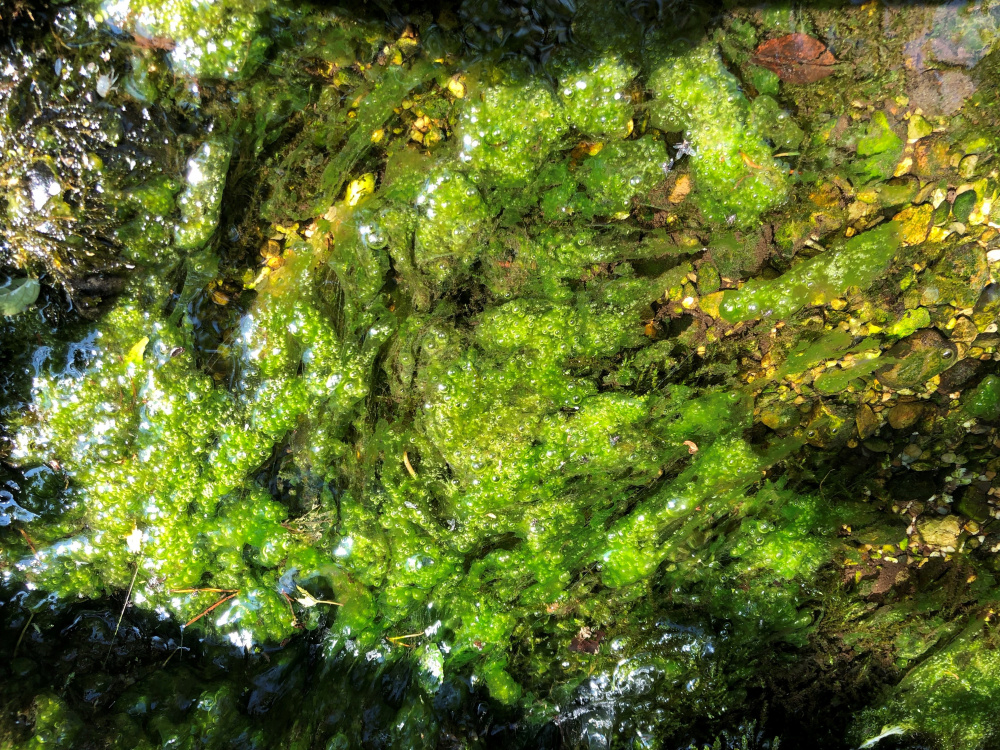This Forum will close on Wednesday 27 March, 2024. Please refer to the announcement on the Discussions page for further detail.
Cascade problem
 InTheMoorlands
Posts: 161
InTheMoorlands
Posts: 161
This year our cascade is being taken over by a light green growth. I've tried several branded products but nothing shifts it:

Anyone know what this is, and how to get rid of it?
At about 750 feet on the western edge of The Pennines. Clay soil.
0
Posts
It's basically algae (filamentous algae).
It's happening because the water has enough nutrients in it to feed it.
Lots of oxygenating plants in the pond will help - the type you just throw into the water.
If you have a header pool chuck in a bunch of watercress (from a supermarket), that will use plenty of nutrients and help to starve the algae. I also use the watercress - cutting it above the water level it's really peppery.
It also seeds, so will return the following year.
I scrape the algae off with my fingernails and try and not let bits go back into the pond.
Billericay - Essex
Knowledge is knowing that a tomato is a fruit.
Wisdom is not putting it in a fruit salad.
Thanks Pete. That makes sense as i'm using tap water in the absence of rain. Apparently tap water is a lot richer. The cascade runs into a small pond so I'll put something in there.
Once bunched oxygenating plants start growing quickly they'll starve the algae so most of it will die off.
Billericay - Essex
Knowledge is knowing that a tomato is a fruit.
Wisdom is not putting it in a fruit salad.
It will grow faster and be more apparent in sunny weather when is is swelled with oxygen bubbles.
The active ingedient in algae suppressing barley straw is hydrogen peroxide. I have never used this, except in my surfing days, but perhaps worth a test starting with very dilute. (say 1%). It degrades to water, so no long term problems.
"Have nothing in your garden that you don't know to be useful, or believe to be beautiful."
My pond has a bio-filter and the cress is in the header pool that's fed by the bio-filter.
I've been eating it for years and I'm still here
I've also given it to neighbours - and they're still there.
It grows quite straggly and I make sure not to use any that have been below the water, just cutting the tops off that are above the water.
Billericay - Essex
Knowledge is knowing that a tomato is a fruit.
Wisdom is not putting it in a fruit salad.
"Have nothing in your garden that you don't know to be useful, or believe to be beautiful."